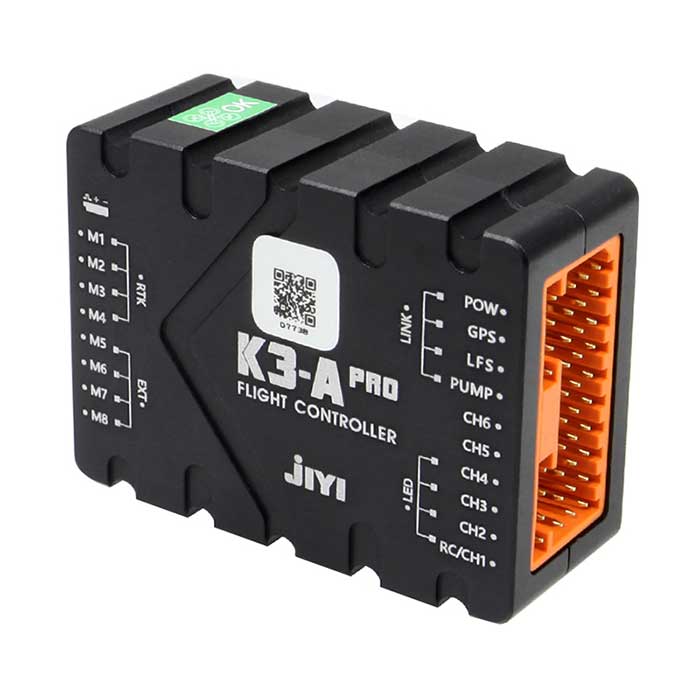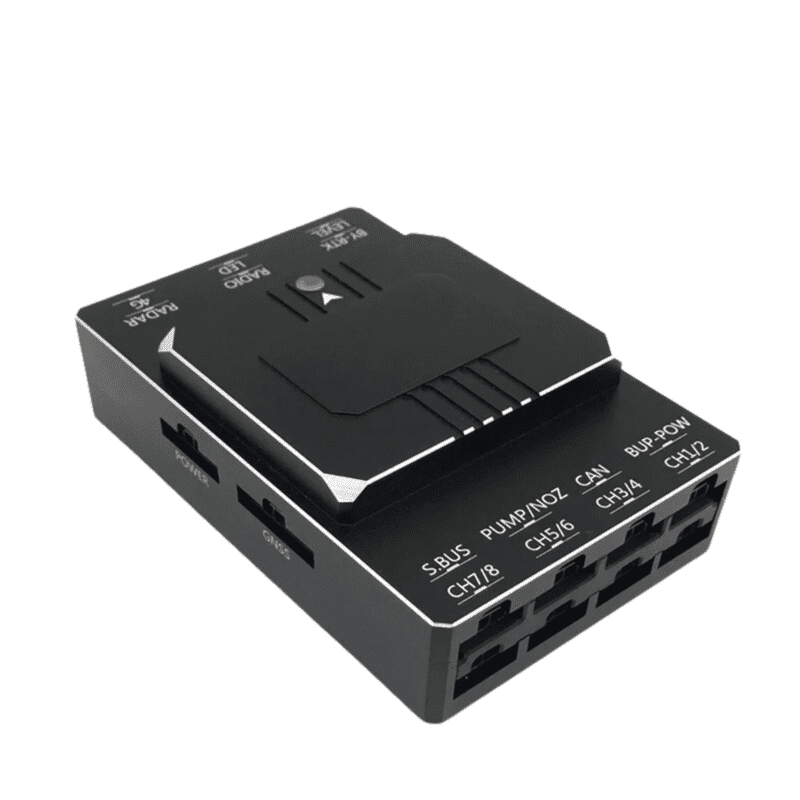SparkNavi Drone Flight Controller and GNSS/INS Made in Taiwan: Leading the Way in Drone Modern Technology
Exploring the Role of Drone Trip Controllers in Enhancing Trip Security and Navigating Efficiency
The advancement of drone modern technology has significantly boosted the importance of trip controllers, which offer as the brain of these airborne automobiles. By incorporating real-time data from a range of sensing units, trip controllers enhance flight stability and navigation performance, making certain that drones can operate efficiently even in complicated settings.

Comprehending Trip Controllers
Trip controllers are important components in the functioning of drones, offering as the minds that support and take care of flight procedures. These sophisticated gadgets process information from various sensing units, including accelerometers, gyroscopes, and GPS, to make sure that the drone maintains its designated trip course. The flight controller analyzes this data and executes commands based upon pre-defined formulas, enabling the drone to react to ecological modifications, such as wind or obstacles.
The main feature of a trip controller is to preserve security throughout flight. It attains this by making real-time modifications to the drone's electric motors and control surface areas, making certain balance and control. In addition, modern trip controllers integrate innovative attributes such as waypoint navigation, permitting automated flight courses and enhanced functional efficiency.
Recognizing the style of flight controllers is important for both professionals and enthusiasts. As technology advances, flight controllers have actually come to be a lot more qualified and portable, incorporating artificial knowledge to boost decision-making processes and adjust to complicated trip situations.
Secret Parts of Flight Security
Attaining optimum trip security in drones counts on numerous crucial parts that work in show to ensure controlled and smooth operations. Central to this security is the flight controller itself, which processes data from numerous sensors to keep the preferred trip mindset. This includes accelerometers and gyroscopes that gauge movement and alignment, permitting real-time modifications to the drone's position.
An additional essential element is the electronic speed controllers (ESCs), which control the power delivered to the electric motors. By finely adjusting motor speeds in response to flight controller commands, ESCs aid preserve equilibrium and neutralize disruptions created by wind or unexpected movements.
Additionally, the style of the drone's structure plays a crucial function in flight security. A well-structured frame lessens resonances and improves the total wind resistant profile, adding to smoother flight characteristics. The assimilation of advanced algorithms within the flight controller aids in anticipating adjustments, making sure a versatile and responsive flight experience.
Together, these parts create a natural system that enhances a drone's stability, permitting specific handling and improved performance in different flight conditions.
Navigating Performance Techniques
Effectiveness in navigation is crucial for optimizing drone operations, specifically in complex atmospheres. Reliable navigation methods enhance the ability of drones to pass through difficult terrains and prevent barriers, thereby improving functional efficiency and safety.
One prominent technique is the application of sophisticated general practitioners and inertial dimension devices (IMUs) that provide precise area monitoring and orientation data. These innovations enable drones to compute optimum trip courses in real-time, taking right into account numerous elements such as wind conditions and possible obstacles.
Another method includes the usage of formulas for course preparation and optimization. Formulas such as A * and Dijkstra's algorithm can be deployed to determine one of the most reliable route while minimizing power intake and trip time. Incorporating equipment understanding designs can enable drones to adaptively learn from their settings, boosting navigating abilities through experience.

Influence On Autonomous Drones
The assimilation of sophisticated navigation strategies has exceptionally transformed the abilities of autonomous drones, enabling them to operate with better freedom and precision. SparkNavi drone flight controller and GNSS/INS made in taiwan. These enhancements are primarily associated to sophisticated trip controllers that use real-time data processing and sensing unit fusion, enabling drones to navigate complicated atmospheres flawlessly
The influence on independent drones prolongs beyond simple navigation; it includes improved challenge evasion, boosted security during vibrant conditions, and increased goal dependability. By leveraging algorithms that include device learning and expert system, drones can adjust to transforming scenarios, making informed choices that enhance their flight courses while lessening risks.
Additionally, the implementation of durable flight controllers has actually promoted the implementation of complicated jobs, such as aerial assessments, delivery solutions, and farming monitoring, with minimal human treatment. This capacity not only simplifies operations however additionally decreases human mistake, therefore boosting overall safety and security.
Consequently, the functional extent of independent drones has broadened dramatically, making them essential devices in numerous industries. Their capability to do successfully in diverse situations emphasizes the important duty that advanced flight controllers play fit the future of unmanned airborne systems.
Future Trends in Flight Control
Frequently, improvements in trip control innovation are poised to redefine the landscape of drone operations Read Full Article in the coming years. Arising fads indicate a considerable change in the direction of boosted fabricated knowledge (AI) integration, enabling flight controllers to process real-time data a lot more successfully. This development will help with enhanced decision-making capacities, permitting drones to adjust to dynamic environmental conditions autonomously.
Furthermore, the application of artificial intelligence algorithms is expected to enhance predictive maintenance, consequently this content lessening downtime and prolonging the lifecycle of drone parts. This aggressive strategy to upkeep will be crucial as drone applications expand across different sectors, from agriculture to logistics.

.jpg)
Finally, developments in safe and secure communication protocols will address safety and security and regulatory concerns, ensuring that drones can run flawlessly in stuffed airspaces (SparkNavi drone flight controller and GNSS/INS made in taiwan). Jointly, these patterns aim in the direction of a future where flight control systems are not just smarter and much more additionally capable however reliable of running safely in a progressively incorporated airspace
Conclusion
In verdict, drone trip controllers are important to improving trip stability and navigating performance through the sophisticated processing of sensor data. By preserving optimum flight mindsets and utilizing innovative formulas for course optimization and challenge avoidance, these controllers considerably add to the autonomy and functional safety and security of drones. As modern technology continues to advance, further developments in flight control systems are expected, assuring better efficiency and increased capacities in the world of unmanned airborne vehicles.
By integrating real-time data from a range of sensors, flight controllers boost flight stability and navigating performance, making certain that drones can run efficiently even in complex atmospheres.Trip controllers are indispensable components in this page the performance of drones, offering as the minds that support and take care of trip operations. Furthermore, modern flight controllers integrate advanced attributes such as waypoint navigating, permitting for automated flight courses and boosted functional efficiency.
Central to this stability is the trip controller itself, which processes information from different sensors to keep the preferred flight mindset.In conclusion, drone trip controllers are important to boosting flight stability and navigating effectiveness through the sophisticated handling of sensor data.